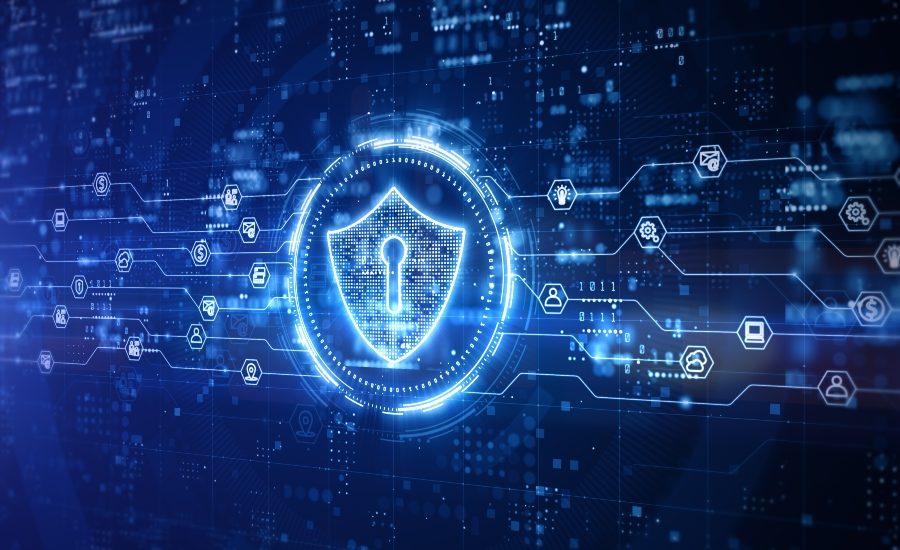
17 Jul Digitizing Defence: Cyber Security Trends to Watch in 2023
Cybersecurity and security in general have always been priorities for business leaders. However, in today’s world, the demand enhanced protections is growing faster than ever. The age of digital transformation has expanded the threat landscape for many organizations, now shifting into new cloud-based solutions, software environments, and networking spaces.
To make matters worse, hackers and criminals are finding new ways to intelligently steal data, and threaten consumers in the online world. Over the last couple of years, particularly since the pandemic, malware, phishing, and ransomware attacks have increased significantly.
Companies are facing a host of new challenges, trying to keep remote and hybrid teams secure, while complying with ever-evolving regulations regarding data privacy.
The evolving landscape is pushing countless organizations to rethink their approach to safety, when implementing new tools, services, and work systems. It’s not just bigger enterprises that are doubling down on security strategies, but smaller companies too, with 78% of SMBs saying they’re planning on investing cybersecurity investments in the coming months.
So, which trends and patterns do companies need to be aware of when building their security strategy? Here are just some of the points to consider in 2023 and beyond.
1. Increasingly Sophisticated Threats
While the tools and technologies available to tackle cybersecurity issues are becoming more advanced, it’s worth remembering that the criminal landscape is evolving at the same pace. In the last few years, we’ve seen plenty of examples of even the biggest companies falling victim to issues such as targeted ransomware, advanced phishing, and malware. For instance, the Wanna Cry Attack on the NHS in England corrupted more than 70,000 devices not so long ago.
Criminals are using the same artificial intelligence and automation capabilities businesses have access to, to scale attacks faster than ever before. At the same time, organizations are struggling to address growing gaps in their security strategy, as trends like hybrid and remote work continue, allowing employees to connect to secure systems from all over the world.
Criminals are even taking advantage of the trends in the evolving digital landscape. As more consumers and companies moved online following the pandemic, social engineering attacks have become increasingly common. Phishing and similar strategies are now a common way for criminals to gain access to sensitive data. Businesses will need to take extra steps to train their teams on how to avoid common problems, and leverage the right technology.
2. The Threat Landscape Grows
While digital transformation has delivered a host of benefits to customers and companies alike, it also means criminals now have more ways to target potential victims. The rise of the cloud as the ultimate solution for communication, collaboration and customer service has created a new host of challenges for businesses to overcome regarding the encryption and management of digital data.
Though cloud solutions such as CPaaS, UCaaS, and CCaaS platforms are responding to these challenges with more advanced identity controls and security settings, there are still various issues for businesses to be aware of. Companies need to ensure they’re taking extra steps to secure their teams operating in the cloud, with multi-factor authentication, and zero trust policies.
Similarly, it’s not just the cloud environment that’s creating new threat landscapes for companies to examine. The mobile ecosystem is also suffering more significantly from cyber-attacks, as consumers do more of their shopping and communicating with their smartphone. Even newly emerging technologies in the automotive space could pose a risk. After all, many of today’s vehicles are being equipped with Wi-Fi, Bluetooth, and other technologies for connectivity, which can also be targeted by criminals looking to steal data.
3. Stricter Regulations Emerge
As the digital world transforms, and our online identities play more of a role in our everyday lives, protecting digital data is growing more crucial. Governments around the world are stepping up to create new policies, guidelines, and regulations, with the aim of protecting the privacy and safety of citizens. According to a study from Inc, around 65% of the world’s population will have their personal data protected by new regulations soon, compared to just 10% in 2020.
In the United States, five major states have begun implementing new comprehensive data privacy laws in 2023, and another 40 states are considering introducing new bills to deal with the threats of the cybersecurity landscape. At the same time, guidelines established in the European landscape, such as GDPR, are forcing companies to think more carefully about how they secure information.
With new technologies like the metaverse and extended reality set to transform the world, and a rise in artificial intelligence to consider, there are likely to be numerous new policies companies will need to adhere to in the years ahead. Failing to implement the right strategy for compliance could mean companies risk hefty fines, and damage to their reputation.
4. Zero-Trust Infrastructure Goes Mainstream
Remote working and hybrid employment strategies have continued to increase in popularity in recent years, even after the lockdowns of the pandemic were removed. This has presented a new challenge to businesses looking to connect employees securely over the cloud. Virtual Private Networks were once a common choice for securing distributed staff. However, the reality is that most of these tools are unable to meet with the scaling demands of companies.
As a result, businesses are spending more time focusing on ways to better-secure their networks. Concepts like SD-WAN and SASE have become increasingly popular in the world of cloud technology, giving companies more control over how information is transmitted. At the same time, zero-trust architecture strategies are becoming increasingly mainstream.
Zero-trust solutions take a multi-tiered approach to security that’s both scalable, and perfectly suited to the cloud landscape. The concept is built on the idea that every connection should be verified, regardless of whether it’s coming from inside or outside of the network. Even the US government has been mandated to adopt a zero-trust architecture by the end of 2024.
5. The Rise of AI and Automation
To stay ahead of the rapidly evolving cybersecurity landscape, most companies are beginning to invest in new technologies to assist with threat detection and response. Tools for endpoint detection and response, and managed detection and response analyse historical data using machine learning and artificial intelligence, to minimize exposure to potential risks.
The increased interest in these intelligent tools accompanies a broader strategy from many companies to embed more automation and artificial intelligence into their threat detection and response strategies. Artificial intelligence isn’t just helping companies to predict and detect attacks faster, it can also assist with securing networks, through strategies like biometric detection and natural language processing. Combined with automation capabilities, these solutions can help organizations to respond to the issues more rapidly they’re facing in their landscape.
6. Outsourcing and Third-Party Risk Management
While the technology available to companies focusing on boosting business security is evolving, many companies still require access to the right talent to ensure they can make the most of their resources. Unfortunately, there’s a significant skill-shortage in the cybersecurity landscape right now.
According to some reports, there’s a shortage of around 3.4 million professionals in the security space. This means companies need to think about how they can access skills and support elsewhere. Third-party risk management and outsourcing strategies are becoming more popular, allowing teams to access the professional assistance of remote teams for their security needs.
At the same time, the skills shortage in the cybersecurity landscape may mean future companies need to invest more time and budget into training their employees with basic cybersecurity skills. Consistently training and developing employees with insights into how to defend against threats can be a great way to reduce the risk caused by human error in the workplace.
Staying Ahead of the Security Trends
Cybersecurity is a dynamic and ever-evolving landscape for any business.
As interest in data security and privacy continues to grow, regulations become stricter, and attacks become more sophisticated, business leaders from all avenues need to rethink how they can protect themselves from common attacks. Today’s best security strategies will be built based on a comprehensive understanding of all the risk factors modern organizations face, from issues in the cloud, to problems with connected tools in the emerging IoT space.
Fortunately, there are vendors out there capable of helping companies enhance their security standing. Working with the right CCaaS or UCaaS provider can ensure you already have the zero-trust tools you need built into your cloud ecosystem to protect your workers. Investing in compliance tools with automated monitoring and AI capabilities can help you to stay one step ahead of regulations.
If you need help finding the right solutions to support your team, and protect your customers, reach out to UCAdvisor, use our comparison matrix, or talk with us about how our Transformation Grant can provide you with the funds you need to invest in enhanced security.



